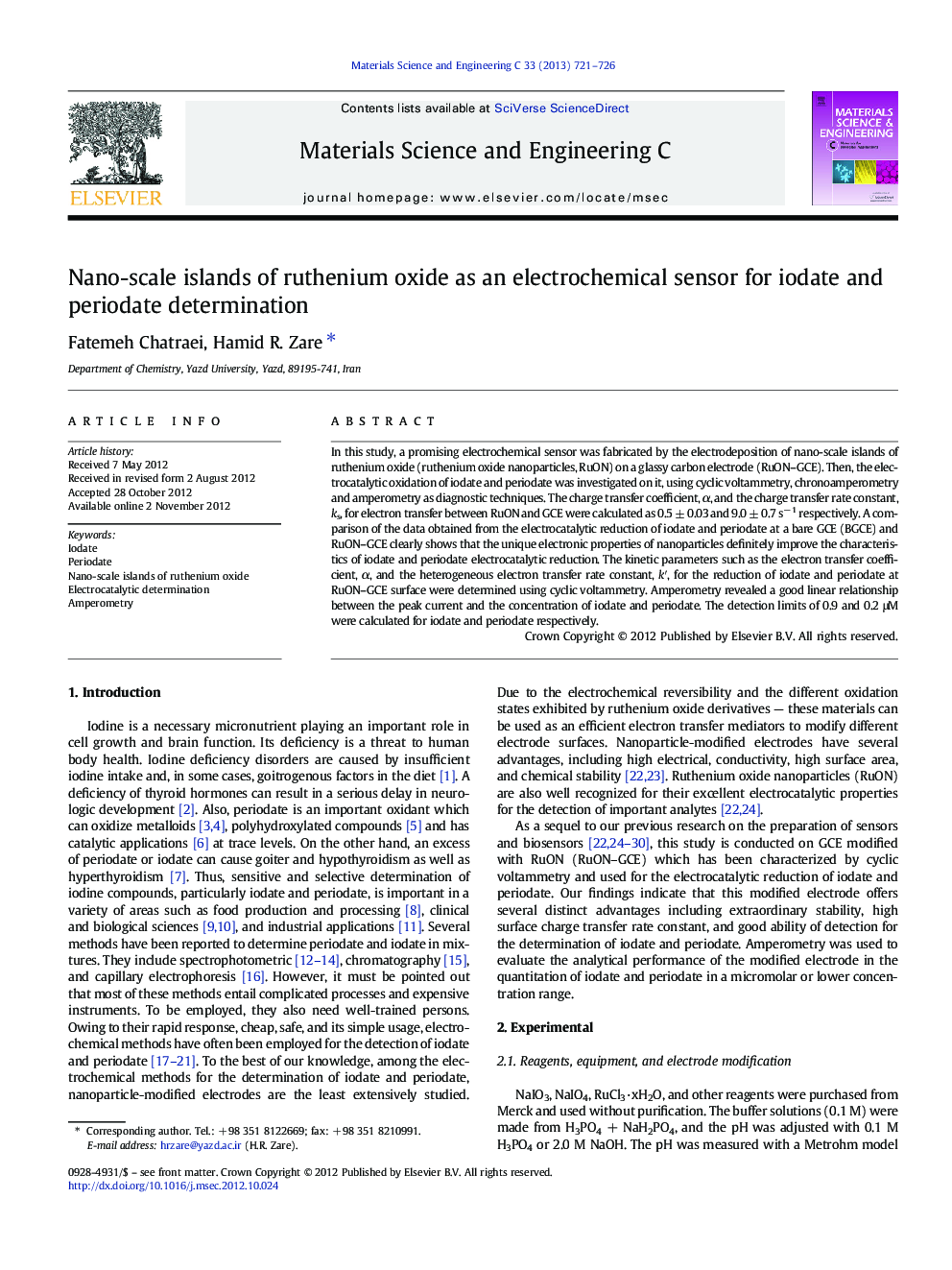| Article ID | Journal | Published Year | Pages | File Type |
|---|---|---|---|---|
| 1428873 | Materials Science and Engineering: C | 2013 | 6 Pages |
In this study, a promising electrochemical sensor was fabricated by the electrodeposition of nano-scale islands of ruthenium oxide (ruthenium oxide nanoparticles, RuON) on a glassy carbon electrode (RuON–GCE). Then, the electrocatalytic oxidation of iodate and periodate was investigated on it, using cyclic voltammetry, chronoamperometry and amperometry as diagnostic techniques. The charge transfer coefficient, α, and the charge transfer rate constant, ks, for electron transfer between RuON and GCE were calculated as 0.5 ± 0.03 and 9.0 ± 0.7 s− 1 respectively. A comparison of the data obtained from the electrocatalytic reduction of iodate and periodate at a bare GCE (BGCE) and RuON–GCE clearly shows that the unique electronic properties of nanoparticles definitely improve the characteristics of iodate and periodate electrocatalytic reduction. The kinetic parameters such as the electron transfer coefficient, α, and the heterogeneous electron transfer rate constant, k′, for the reduction of iodate and periodate at RuON–GCE surface were determined using cyclic voltammetry. Amperometry revealed a good linear relationship between the peak current and the concentration of iodate and periodate. The detection limits of 0.9 and 0.2 μM were calculated for iodate and periodate respectively.
Graphical abstractFigure optionsDownload full-size imageDownload as PowerPoint slideHighlights► Ruthenium oxide nanoparticles, RuON, were used for electrocatalytic reduction iodate and periodate. ► Formal potential, E0′, of the surface redox couple of RuON is pH-dependent. ► The heterogeneous electron transfer rate constant values between both analytes and RuON were calculated.
